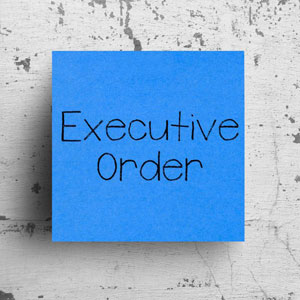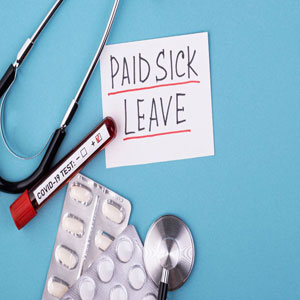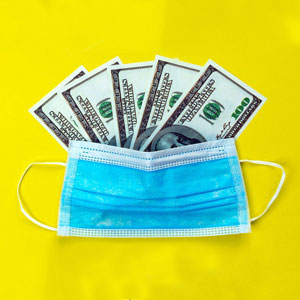
As 2021 ends and 2022 begins, COVID-19 continues to significantly impact all aspects of life, including the workplace. Paid sick leave (PSL) and workplace safety are once again at the forefront of the effects. *Paid Sick Leave For many California workers, the COVID-19 pandemic has necessitated time away from work. Under state law at the time that the pandemic began, workers had only three days of paid sick leave available. Senate Bill 95 and federal tax credits expired on October 1st. SB 95 provided workers with two weeks of PSL if they were infected with the virus or needed to care for relatives or children who were infected. A California Division of Occupational Safety and Health emergency rule, renewed December 16th, allowed some workers to be paid for 10 days if they become infected with or were exposed to the virus. However, this rule did not apply to leave to care for sick relatives or children. Also, coverage…Read More

The COVID-19 delta variant continues to surge despite vaccination rates rising in more places throughout the country. Here are answers to some frequently asked questions about California employment law relating to COVID-19 testing and vaccination. Is an employer required to compensate an employee for the time spent obtaining a COVID-19 test or vaccination? If an employer requires employees to obtain a COVID-19 test or vaccination then the employer must pay for the time it takes for the testing or vaccination, including travel time. Why? Because this time would equate to “hours worked” as defined as the time during which a worker is subject to the control of an employer. May an employer require employees to submit to a medical test to detect the presence of the COVID-19 virus or antibodies before permitting employees to enter the workplace? Under the FEHA, an employer may mandate a medical examination when it is job-related and consistent with business…Read More

In July of 2021, President Joe Biden signed an Executive Order on Promoting Competition in the American Economy (“Order”). The purpose of this action is to encourage the Federal Trade Commission (“FTC”) to exercise the FTC’s statutory rulemaking authority to “curtail the unfair use of non-compete clauses and other clauses or agreements that may unfairly limit worker mobility.“ Biden’s action is part of a larger effort to promote competition and remove barriers to economic growth in the country. The White House believes that non-compete agreements drive down wages by making it harder for workers to switch to jobs with higher wages. The Order does not have any effect on current law or the enforceability of non-competition agreements in any context in any jurisdiction. In no way does the Order require employers to modify their existing non-competition agreements. The Order is to “encourage[s]” the FTC to “consider” using its authority to “curtail the unfair use of non-compete clauses.” These…Read More

The COVID-19 pandemic seems far from over with a late July surge in many parts of the country. California workers remain subject to the workplace risks posed by the coronavirus. Here are some frequently asked questions related to workplace issues that may arise because of the pandemic. *Is an employee entitled to receive compensation for reporting to work and then being sent home by the employer? In most cases, if an employee reports for a regularly scheduled shift but works fewer hours or is sent home, the employee must be compensated for at least two hours, or no more than four hours, of reporting time pay. For example, a worker who reports to work for an eight-hour shift but only works for one hour must receive four hours of pay – one for the hour worked and three as reporting time pay. This allows the worker to receive earnings for at least half of an…Read More

While many Americans have received the COVID-19 vaccine, the pandemic and its effects have not completely vanished from life as we (now) know it. Some government bodies are still imposing restrictions to help protect public health and mitigate these continuing devastating effects. Santa Clara County’s Public Health Officer recently issued a new order to guide on June 21, 2021, for employers and residents as the State of California and Santa Clara County begin to reopen and resume some pretense of normalcy. The June Order eliminates the directive to work (telework) from home. The order also removes current requirements for capacity restrictions. However, it does not remove the requirements for masks to be worn indoors. It is still recommended that employee lunchrooms and breakrooms remain closed as the County is still discouraging workers from eating together indoors. Employers were required to obtain the vaccination status of all their employees who work in Santa Clara County by June 1, 2021. Of…Read More

COVID Paid Sick Leave (PSL) in California is a mechanism by which employers may provide paid sick leave to their workers. California employers with more than 25 employees must provide up to 80 new hours of COVID-19 supplemental paid sick leave (SPSL). This law applies retroactively to January 1, 2021. As the Families First Coronavirus Response Act (FFCRA) was extended to September 30, 2021, it has remained a way for employees to counteract the financial costs of the pandemic. Employers must fund this benefit without state assistance. However, California law does not prohibit an employer from using the FFCRA as a method of offsetting the costs of PSL. The FFCRA has also expanded the reasons employees may take Paid Sick Leave. Because these provisions went into effect as of April 1, 2021, employees who have already taken FFCRA paid sick leave have renewed banks of time as of April 1, 2021. Thus, the employee has a new bank of…Read More

As spring approached in 2021 with the hope of putting the worst of the COVID-19 pandemic behind us, the California Legislature enacted Senate Bill 95 (“SB 95”) to provide supplemental paid COVID-19 sick leave to Californians, retroactively to January 1, 2021. California’s previous supplemental paid COVID-19 sick leave regulations expired on December 31, 2020. Between then and March, California employers were forced to work through a variety of local ordinances in the absence of a statewide emergency paid sick leave law. This leave must be granted in addition to leave taken under state, local, or employer leave laws or policies. SB 95 requires 80 hours of paid leave to employees for qualifying reasons. This new legislation expands paid COVID-19 leave to a greater number of employers and for a larger number of reasons. Unlike the Families First Coronavirus Response Act (FFCRA), this Act does not provide a tax credit or other funding measure to offset the cost…Read More

During the pandemic, OSHA standards continue to apply as employers attempt to protect workers from exposure to the COVID-19 virus. Occupational Safety and Health Administration (OSHA)and the Centers for Disease Control and Prevention (CDC) have issued workplace guidance for employers during the COVID-19 pandemic. This guidance directs how employers should develop preparedness plans and implement them through programs that effectively train workers. Employers are also directed to assess worker exposure to workplace hazards and risks and take infection prevention measures to reasonably address these hazards and risks in ways consistent with OSHA Standards. The following are a list of the measures that OSHA has issued as guidance for employers: promoting frequent and thorough handwashing or sanitizing with at least 60% alcohol hand sanitizer; encouraging workers to stay at home if sick; encouraging use of cloth face coverings; training workers on proper respiratory etiquette, social distancing, and other steps they may take to protect themselves; using stanchions to help keep…Read More